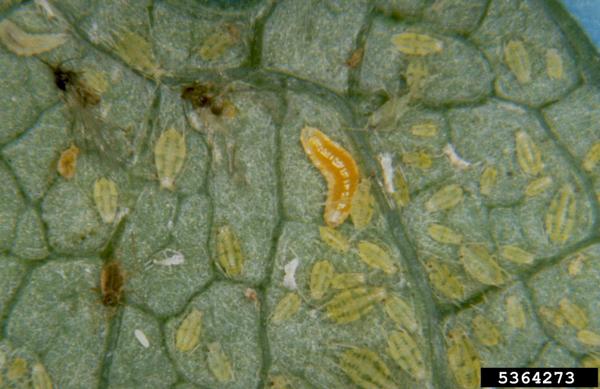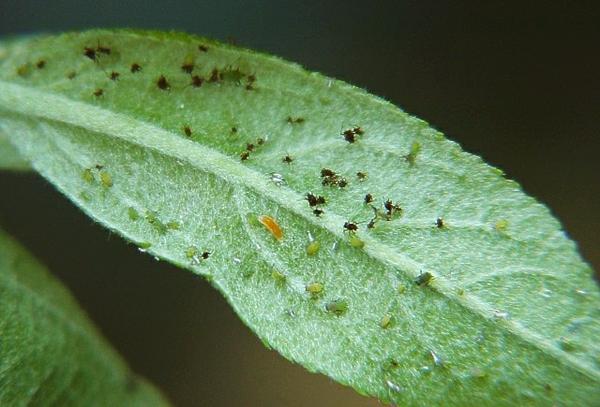Background and Description
The larvae of aphid midges (Aphidoletes aphidimyza) are important predators of more than 60 species of aphids. Larvae are slender, orange to red in color (depending on their diet) and up to 1/8 inch (3mm) long when fully developed. Adults are small mosquito-like brown flies, usually about 1/8 inch (3mm) long. Eggs are extremely small (1/64 inch, or 0.4mm), oval, and orange.
Life history
Midges overwinter as larvae in cocoons, pupating when the weather warms in spring. Mated females lay up to 70 eggs within aphid colonies so that the hatched larvae will have prey to consume. Eggs hatch within 2 to 4 days and larvae feed for a week or two before dropping to the soil, pupating, and emerging as 2nd-generation adults two to three weeks later. There are several generations per year.
When commercially-grown midge larvae are released into greenhouses, the life cycle may be considerably shorter.
Predation
In apple orchards, midge larvae can be effective predators of green apple and spirea aphids. Larvae will paralyze their prey by disabling their leg joints, then they suck out the body contents. A blackened, sunken aphid shell often remains attached to the leaf. One midge can consume anywhere from seven to several dozen aphids before pupating, and it may actually kill many more than it eats. Adults are very effective at locating aphid colonies and laying eggs among them.
Publication date: Feb. 23, 2015
N.C. Cooperative Extension prohibits discrimination and harassment regardless of age, color, disability, family and marital status, gender identity, national origin, political beliefs, race, religion, sex (including pregnancy), sexual orientation and veteran status.



